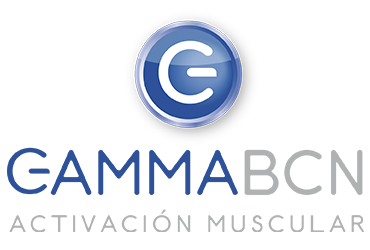Muscle reinforcement
Muscle reinforcement is based on tailored, guided exercises and it is the perfect complement to MAT®. Based on the information gathered about the muscle condition via testing, we optimally tailor the amount and manner of exercise needed with the goal of obtaining the maximum benefit on the body at the aesthetic, physiological, metabolic, and psychological levels.
Muscle reinforcement can be implemented for two goals:
To maintain, reinforce, and improve MAT® results for those individuals who previously received treatment with this therapy because of pain or injury they suffered.
To improve the person’s overall fitness level through exercising, always keeping in mind the muscle weak links and imbalances previously detected via MAT®.
At any rate, muscle reinforcement and MAT® will always be interconnected because a person will need to be evaluated with this technique to have a good understanding of how muscles are behaving. Therefore, exercises will be tailored to these conditions to obtain the best results and also reducing the risk of suffering pain or injury.
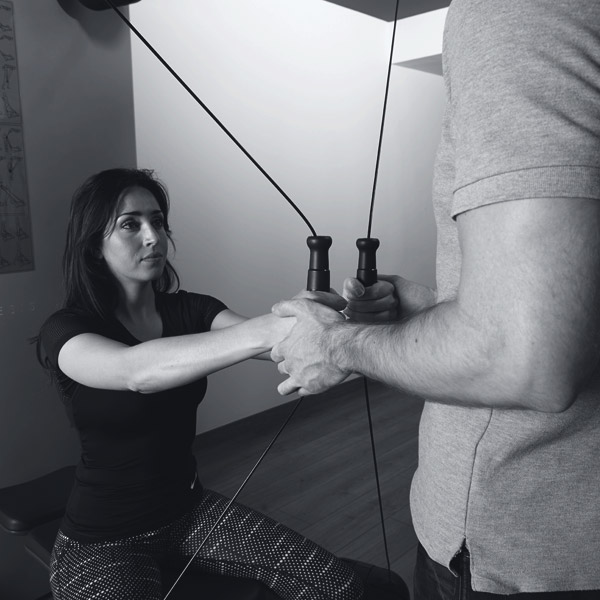
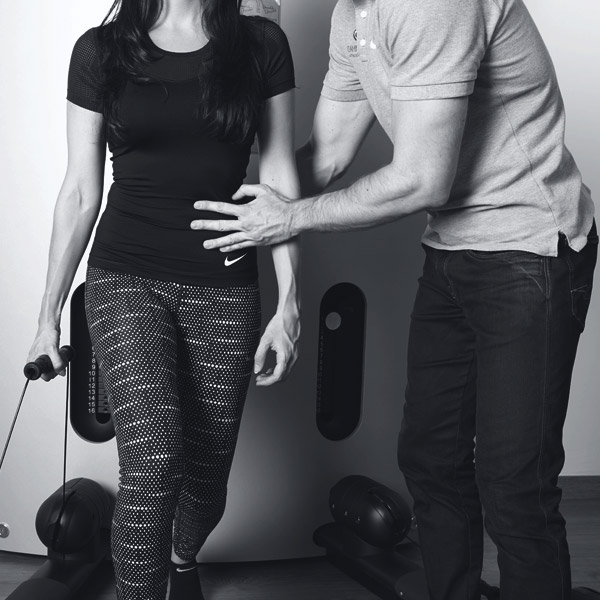
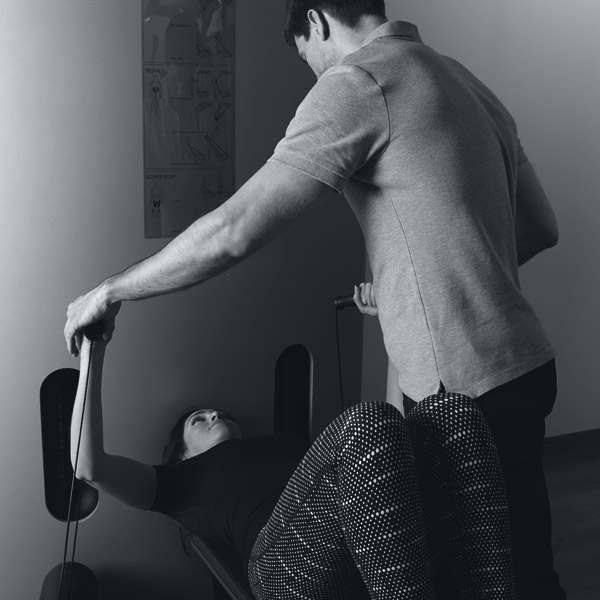
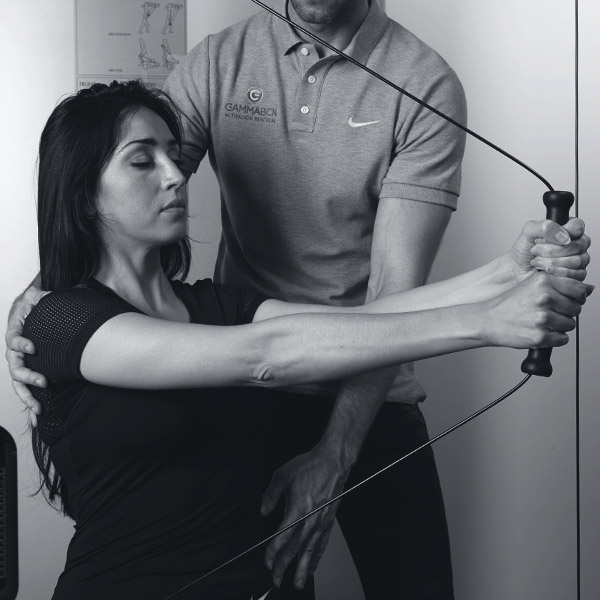
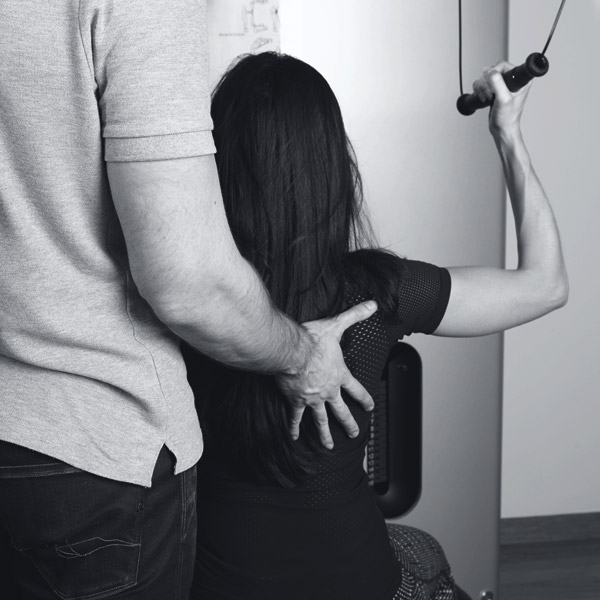
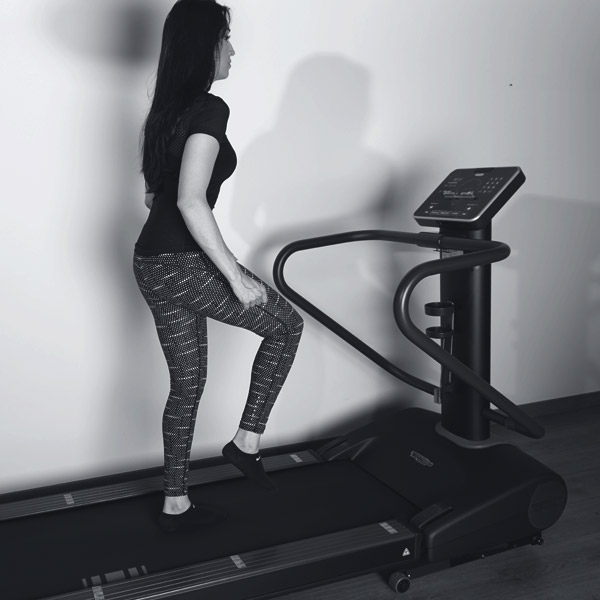
Of interest to you
Our concept of training is based on the information that MAT® provides us regarding the muscle functioning in a person. For this reason, we would rather call personal training muscle reinforcement. It’s a question of concept: physical exercise tailored to the individual and based on the weak links detected and addressed by MAT® with the goal of reinforcing them. In this way, we will optimize results gained in the reinforcement session and we will minimize the risk of injury or pain from occurring. Getting in shape at Gamma Bcn Activación Muscular is a different experience because our starting point is our thorough understanding of the weak points in the client so that we may tailor the exercises in order to obtain the maximum benefit for the client aesthetically, physiologically, and psychologically.
Exercising by default is not always healthy. It will depend on the quantity, the condition of the individual, and how it is performed. If a deep weak link is present, more or continued exercise will not eliminate it. MAT® detects and addresses weak links in our muscles so that our body’s functioning is optimized. The body’s condition will improve to be able to exercise with the certainty that it functions properly. Only if there is balance in the proper functioning of the muscles, it is then that exercising will produce positive effects in our body. In any other scenario, exercising will be like tossing a coin in the air because we will never know whether the execution of an exercise will bring positive or negative effects to our physical conditioning.
A "muscled" or "toned" body is the result of a particular training routine in combination with a particular diet. It does not mean, however, that there may be imbalances in the muscles that could predispose the body to experience pain, injury, or limitations in athletic performance. To achieve structural or aesthetic improvements training must truly be intense. The more intense the exercise is, the more stress our muscles suffer. This factor is determinative when imbalances occur and affect the muscle’s proper functioning. MAT® is the ideal tool to address muscle imbalances that may result from demanding training sessions. Additionally, MAT® will optimize the body’s abilities allowing the body to endure much more exigent training sessions and, therefore, obtaining more and better aesthetic changes (hypertrophy, muscle definition...). Thus, this technique can be an ally for those who want to achieve such adaptation in their bodies because it will allow them to exercise at the peak of their abilities and minimizing the risk to experience pain or injury.
There is the belief that stretching may be beneficial before or after a training session because it better prepares the body for the exercise if stretching is done before, or after to recover the muscle from the effort performed. Others believe that stretching is done to improve "flexibility" or joint mobility because trying to be more mobile may achieve benefits for their bodies. And there are still others who believe that stretching relaxes tensed muscles and reduces discomforts associated with excessive muscle tension.
In any case, stretching does not produce those benefits or effects and, in many occasions, may worsen the cause that leads to stretch a muscle and predispose the person to experience pain, injury, or limitation in athletic performance.
Whenever a movement occurs, there are muscles that shorten to be able to accomplish it on one side of the joint axis and, on the other, there are muscles that stretch. A problem occurs when we try to force this movement beyond our body’s ability to carry it out. Our nervous system limits a movement whenever it detects imbalances in the muscles involved in that movement. To that purpose, our nervous system increases tension levels in the muscles that engage in that particular movement to hinder it. These will be the muscles that everyone will want to stretch because they will be more tense than usual. However, this tension is the result of a present imbalance in the body, which behaves in this manner to protect itself against this imbalance. Therefore, stretching will in a way force the elimination of a protective measure put in motion by our body. Without knowing it, we could be predisposing our body to injury, pain, or limitation in athletic performance. Stretching will leave the joint involved unprotected because the movement will not be controlled and, by doing stretches, we will want to force this movement when our nervous system is limiting it precisely because it does not control it. A movement without control is potentially harmful.
When that excessive tension translates into a muscle contracture or muscle overcharge, both symptoms are the best solutions that our body has found to continue moving, based on the current functioning of the body’s muscles. Our muscles may experience imbalances when we are under stress (mechanical: maintaining the same posture for a prolonged period of time, exercise, repetition of a movement, built up fatigue...; chemical: poor nutrition, dehydration, food intolerances...; psychological: emotional shock, psychiatric pathologies, depressive conditions ...); or trauma (sequelae from a bump/hit, surgery...). In this situation, our body will compensate that imbalance of one or several muscles making use of another or other muscles instead. These other muscles will perform the movement for those muscles that do not function properly. As a result, muscle tension in these muscles will increase because they will be overworked. Getting rid of this tension with stretches or massage therapy will bring about temporary relief and not a long-lasting solution because this tension is caused by a muscle imbalance that neither stretching nor massage therapy can resolve. The best way to rid the body of this tension is to detect where the muscle imbalances occur that causes such overwork for the muscle or muscle and to resolve it. In this way, the muscles that are overworked will return to its normal levels of tension once the problem is resolved.
Whether stretching is performed to prepare or relax the body before or after training, to force a movement or to relief a muscle contracture or muscle overcharge will only harm the proper functioning of our body and it will never resolve the causes that limit our mobility (less "flexibility") or what causes a contracture or muscle overcharge.
A better and healthier option to preserve the integrity of our joints and muscles is to perform "SHORTENINGS". Based on the fact that our muscles are responsible for our movement, the idea is to carry out a movement to its limit in the same way we do when stretching but without forcing the movement with our hand, or using a bench or a wall to accomplish it..., just carrying out the movement by itself. We will be doing the same movement and maintaining it for the same period of time as when we stretch but without external help that would force this movement, shortening or lengthening our muscles. In this way, we will work the muscle or muscles up to the point our body allows, with control, without forceful movements, and without reaching risk-creating positions that would leave our joints unprotected.
To believe that we will be able to get rid of back pain practicing swimming is illusory in the majority of cases. Pain is the manifestation that something is not functioning properly and is the result of muscle imbalances that alter our body’s ability to move and adequately control our joints. If those imbalances are not specifically addressed, we will not be able to improve the functioning of our body and avoid the occurrence of pain due to muscle overcharge or excessive tension. If the nervous system does not have an adequate control over a muscle or group of muscles, it will not be able to contract them when needed and will use others instead. Therefore, generic exercise like swimming will not get rid of weak links. A generic exercise will probably increase even more the gap between those muscles that are overworking because they are overused and others that will show imbalances. This fact can even worsen the pain and the present imbalance. MAT® detects and addresses weak links and optimizes the functioning of our body avoiding the occurrence of muscle overcharges or pain. When a client already experiences pain or any other symptom, MAT® will help in a fast recovery process.
Doing generic exercises does not guarantee that our muscle’s functioning will be optimal and does not address potential weak links that are present and may hinder how our body manages our movement and joints. If our nervous system does not have proper control over a muscle or group of muscles, it will not be able to contract them when needed and it will utilize other muscles instead. The best way that our body will find a way to continue moving is by substituting those muscles not functioning properly for others that can perform the same task of movement. Thus, doing crunches will not get rid of weak links; instead, it will probably increase the performance gap between those muscles that are overworking because they are overused and those that show imbalances. This fact could even increase lumbar pain. In this situation, the best solution is to localize where the imbalance is and address it because for a lot of people with lumbar pain doing crunches may worsen it. MAT® would detect and address the cause thus avoiding excessive tension or muscle overcharge in the lumbar area.
